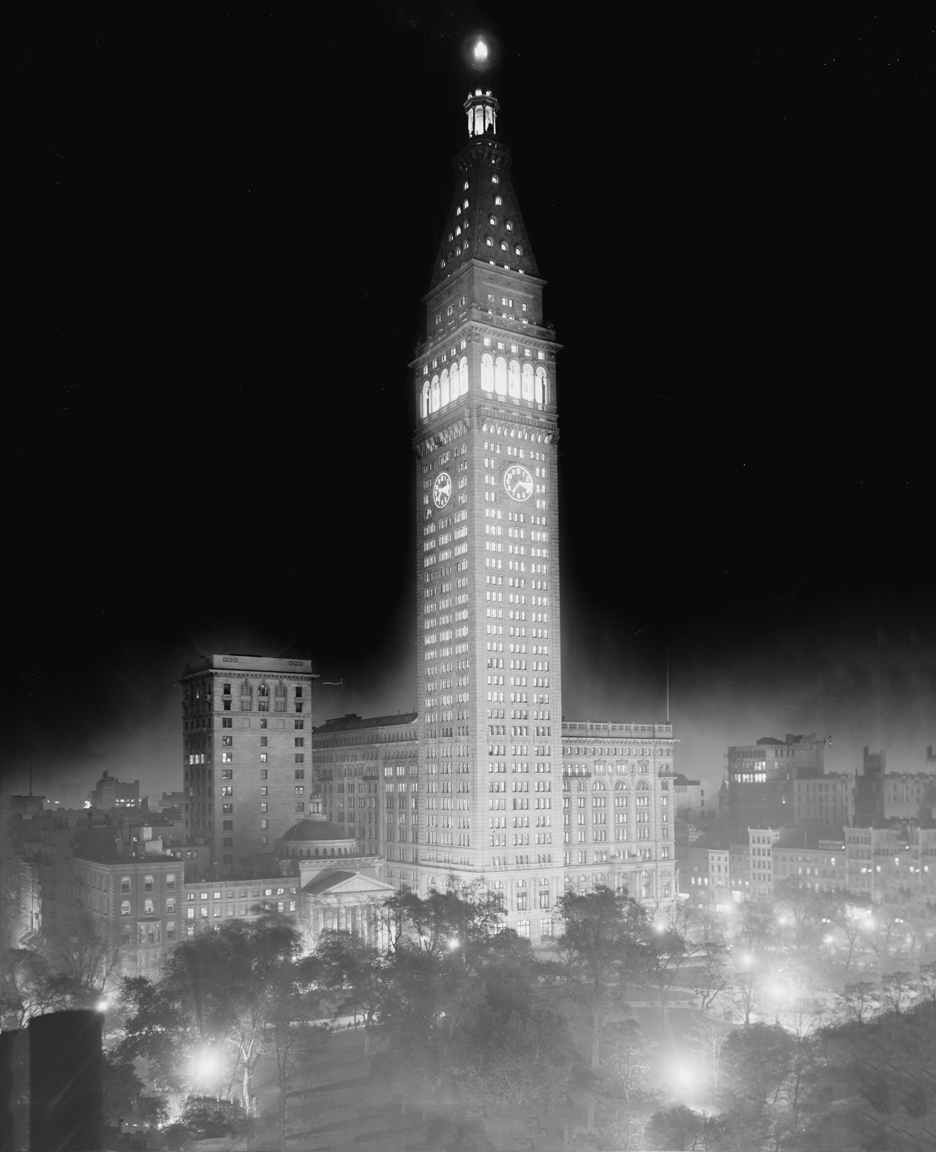The Skyscraper Museum is devoted to the study of high-rise building, past, present, and future. The Museum explores tall buildings as objects of design, products of technology, sites of construction, investments in real estate, and places of work and residence. This site will look better in a browser that supports web standards, but it is accessible to any browser or Internet device.
METROPOLITAN LIFE TOWER

Metropolitan Insurance Building at Night, Madison Square, New York. c.1913, Detroit Publishing Co., Library of Congress.
In the late 1880s, the Metropolitan Life Insurance Company sold its building in Lower Manhattan and moved uptown to Madison Square and 23rd Street, where it erected an 11-story headquarters, completed in 1893. Rapid growth required more and more space for burgeoning staff and files, until annexes covered nearly the entire block. After acquiring the last remaining parcel and demolishing the Madison Square Presbyterian Church, the company planned its signature campanile as a symbol of its success.
In 1909, the Metropolitan Life Insurance Tower claimed the title of world's tallest office building from the 612-foot Singer Building by climbing to 700 feet. Designed by architect Napoleon LeBrun and Sons, the 50-story structure took the form of a slender shaft modeled on the Renaissance bell tower of San Marco in Venice. The sharply pitched roof is topped with a cupola and lantern that would flash as a signal to ships at sea.
A lighted 26-foot-diameter clock adorned each side of the tower. Four chimes, which were said to be heard up to thirty miles away, rang four times on the quarter, eight on the half, twelve on the three-quarter, and sixteen on the hour. A flash of light accompanied each ring from the top of the tower, which was visible within 100 miles. The tower's timekeeping had the capability to reach five million people.
In the 1960s, the expensive Tuckahoe marble façade was subjected to an aggressive remodeling campaign in which most of the classical detail was removed, as well as the balconies and prominent cornice. The marble façade was replaced with sheer limestone panels, so the tower would match the modernized base. Today, the clock faces remain the only memory of the ornate façade.
